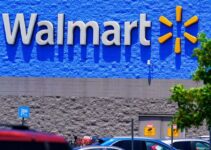Starbucks is an American retail premium coffee chain multinational brand. Zev Siegl, Gordon Bowler, and Jerry Baldwin established the retail coffee chain company in 1971. Today, we’ll discuss the Ansoff matrix of Starbucks and; four growth matrix strategy quadrants; market penetration, market development, product development, and diversification of the Ansoff matrix business example.
Elements of Market Penetration Strategy of Starbucks
- Corporate socially responsible brand by taking sustinable initiatives and helping coffee bean farmers
- Regularly posting content on social and digital media platforms to connect and engage with the online custoemrs
- Offering rewards to the loyal customers in the form of free-coffee and other gifts
- Building strategic alliance with other companies to amplify its customer market reach
- Decorative lighting and other eye-captivating elements inside ite retail coffee stores
- Mobile applications help customers to order before and avoid waiting in the line
Top Selling Markets and Geographical Regions of Starbucks
- Philippines – 447 stores
- Thailand – 474 stores
- Indonesia – 591 stores
- Taiwan – 563 stores
- Turkey – 676 stores
- UK – 1266 stores
- Japan – 1733 stores
- Latin America – 1649 stores
- Korea – 1870 stores
- Canada – 1458 stores
- China – 6804 stores
- USA – 16346 stores
Latest and Best Selling Collection of Starbucks
- Hot chocolate
- Coffee
- Caffe Americano
- Pumpkin spice latte
- Caramel Macchiato
- Vanilla latte
- Green tea latte
- Cold brew coffee
- White chocolate mocha
- Cold brew
- Caramel frappuccio
- Mocha
- Flat white
- Chai latte
The Ansoff matrix of Starbucks would focus on the four growth matrix strategy quadrants; market penetration, market development, product development, and diversification. Here’s the Starbucks Ansoff matrix company example as follows;
Ansoff Matrix of Starbucks
Let’s discuss the four growth matrix strategy quadrants in the Ansoff matrix of Starbucks as an Ansoff matrix company example; they’re as follows;
Market Penetration Strategy of Starbucks
The market penetration quadrant in the Starbucks Ansoff matrix business example as a growth matrix strategy has the lowest risk rate in the growth strategy. It is because here the coffee chain brand sells its current products and services in the existing customer market. However, the retail coffee market is growing, and the market penetration growth strategy is possible.
I-Quality Service
Starbucks offers high-quality service everywhere in almost all of its brand retail chain stores. The high-quality product and quality service helps the company to further penetrate the market and amplify its sales.
II-Acquisition
Starbucks acquires small competitive brands out of the market if they’re willing to sell their business. It helps the retail coffee chain brand to decrease the competition and amplify its market share with its existing product portfolio in the same market.
III-Mobile Application
In order to ease customer shopping experience, Starbucks has launched mobile and web applications. It allows customers to place orders online in their nearest retail coffeehouse, and pick up when their coffee is ready. It allows them not to wait in line for the coffee.
IV-Online Payment
Speaking of optimizing customer experience, Starbucks also allows customers to pay online from their application without worrying about the cash currency.
V-Customized Service
Starbucks also provides a customized and personalized shopping experience to the customers by writing the customer’s name on the cup. The personalized service helps the company to increase its sales in the current market with the same product.
VI-Discounts & Free Coffee
Starbucks offers price discounts to its repeat customers and free coffee if they achieve a particular target. Such types of discounts promote brand loyalty among customers.
Market Development Strategy of Starbucks
The market development quadrant in the Starbucks Ansoff matrix business example as the growth matrix strategy has a bit higher risk rate than the market penetration strategy. It is because here you expand your coffee chain market and offer your current product portfolio in the new market. However, you don’t know the culture and response of the new market; that’s what makes it riskier.
I-Coffee Market Expansion
Starbucks has been expanding its customer market and entering new geographical boundaries as a part of its global business expansion plan. The coffee chain brand issues franchisee licenses to various potential entrepreneurs to open up brand outlets in different geographical regions. A significant portion of Starbucks revenue comes from the international because the local US coffee market has become saturated with competition.
II-Localized Service
While entering any new market with its existing product portfolio, Starbucks provides localized service to the customers. Some regions want small cups and others want big cups, and the company’s local customer markets acceptable standards. It helps the company to amplify the customer acceptance rate of its products and services.
Product Development Strategy of Starbucks
The product development quadrant in the Starbucks Ansoff matrix business example as the growth matrix strategy has a higher risk rate than the market penetration strategy. It is because here you launch a new product service in the coffee and hot beverages line for the existing customer market. You would have to run new marketing and promotional campaigns for the new product and it makes it riskier.
I-Portfolio Expansion
Starbucks revised its product portfolio over time and included new products and services in the menu relevant to the customer’s demands and requirements. Along with coffee, some of the other products that the brand has launched are as follows;
- Premium flavor
- Sandwiches
- Cookies
- Pies
- New flavors
II-Seasonal Treats
Along with casual coffee and a routine menu, Starbucks also offers seasonal desserts and pumpkin pie for customers on certain occasions. It helps the company to connect with customers by celebrating festivals.
III-Free Samples
While launching any new product in the current customer market; the company makes sure to offer free samples to the customers. It helps the company to increase the acceptance rate of the new product.
IV-Customer Feedback
Starbucks pays heed to the customer feedback and reviews, and make adjustment in the new product relevant to the customer requirements.
Diversification Strategy of Starbucks
The diversification quadrant in the Starbucks Ansoff matrix business example as growth matrix strategy has the highest risk rate of growth strategy than all three previous growth strategies. It is because here you launch a new hot beverage product or service in a new customer market. You won’t know how your new market will react to the new items.
I-Horizontal Diversification
Starbucks has been expanding its market and product portfolio ever since its foundation. The coffee chain brand offers breakfast, lunch, and dinner to customers in different markets relevant to the customer demand along with coffee. It has allowed the company to maintain its position in the global market.
Conclusion: Starbucks Ansoff Matrix Company Example |Growth Matrix Strategy
After an in-depth study of the Ansoff matrix of Starbucks; we have realized that Starbucks is the world’s leading retail coffee chain brand. If you are learning about the Starbucks Ansoff matrix company example; then you should keep in mind the abovementioned four growth matrix strategy quadrants; market penetration, market development, product development, and diversification.

Ahsan is an accomplished researcher and has a deep insight in worldly life affairs. He goes Live 3 days a week on various social media platforms. Other than research writing, he’s a very interesting person.


